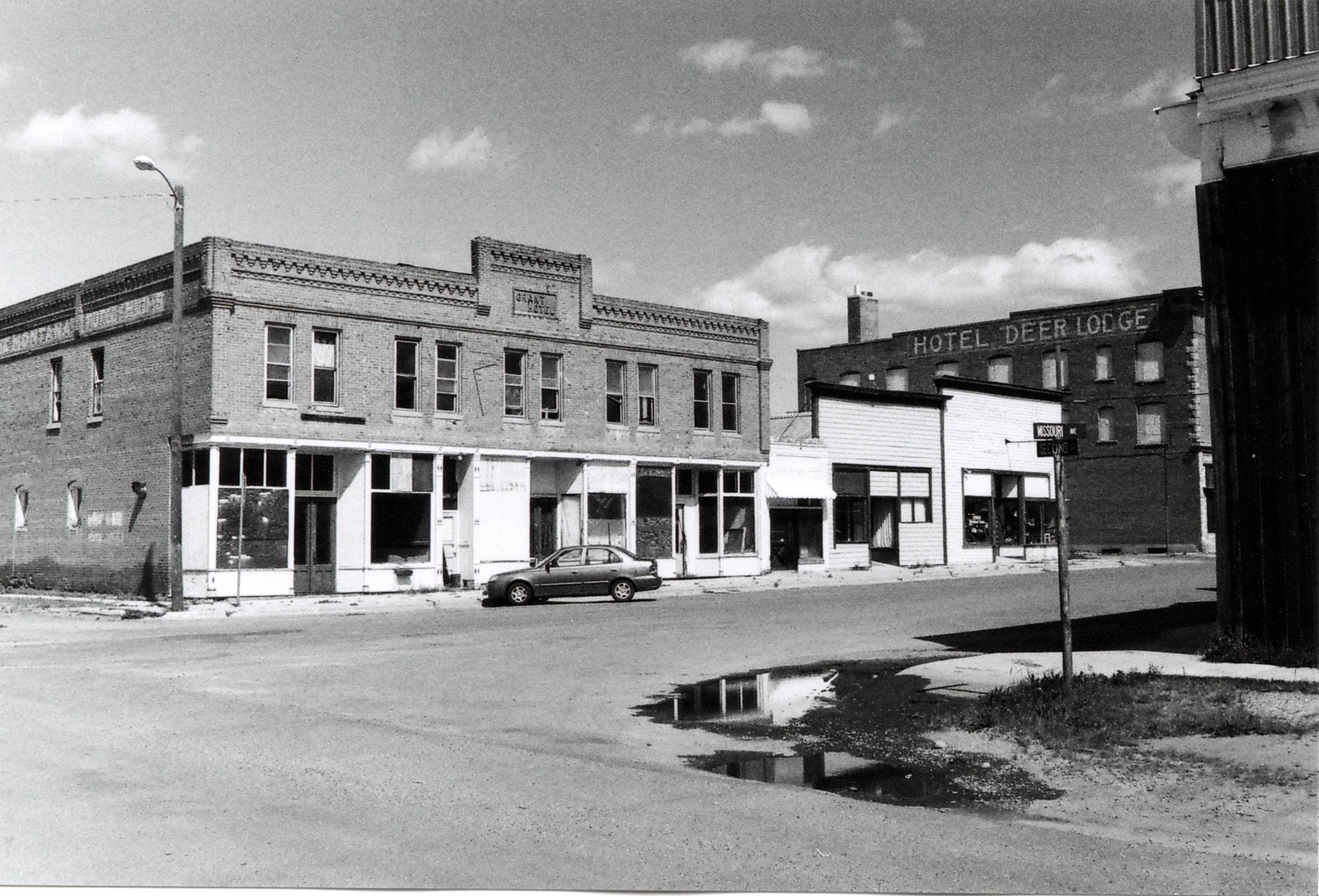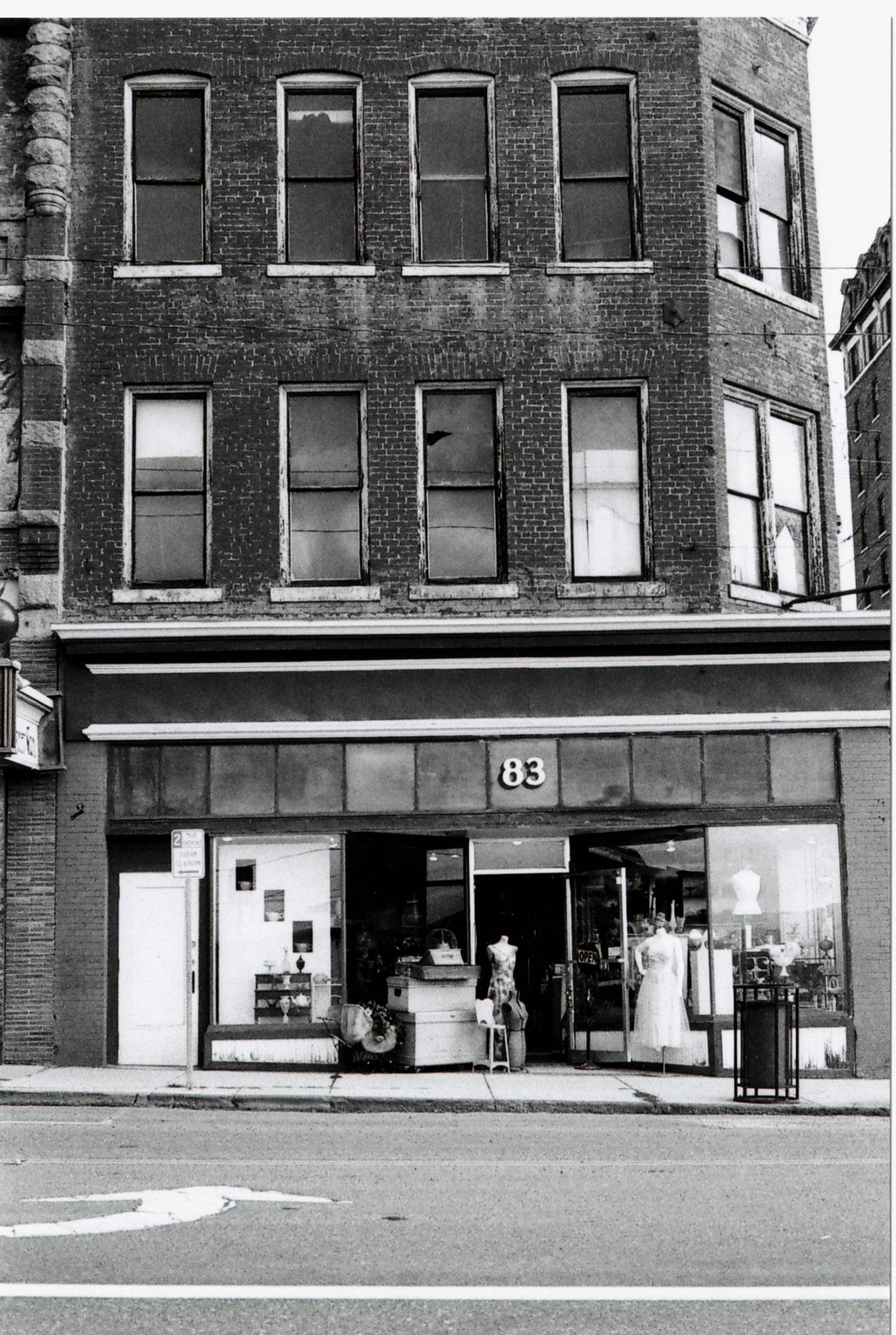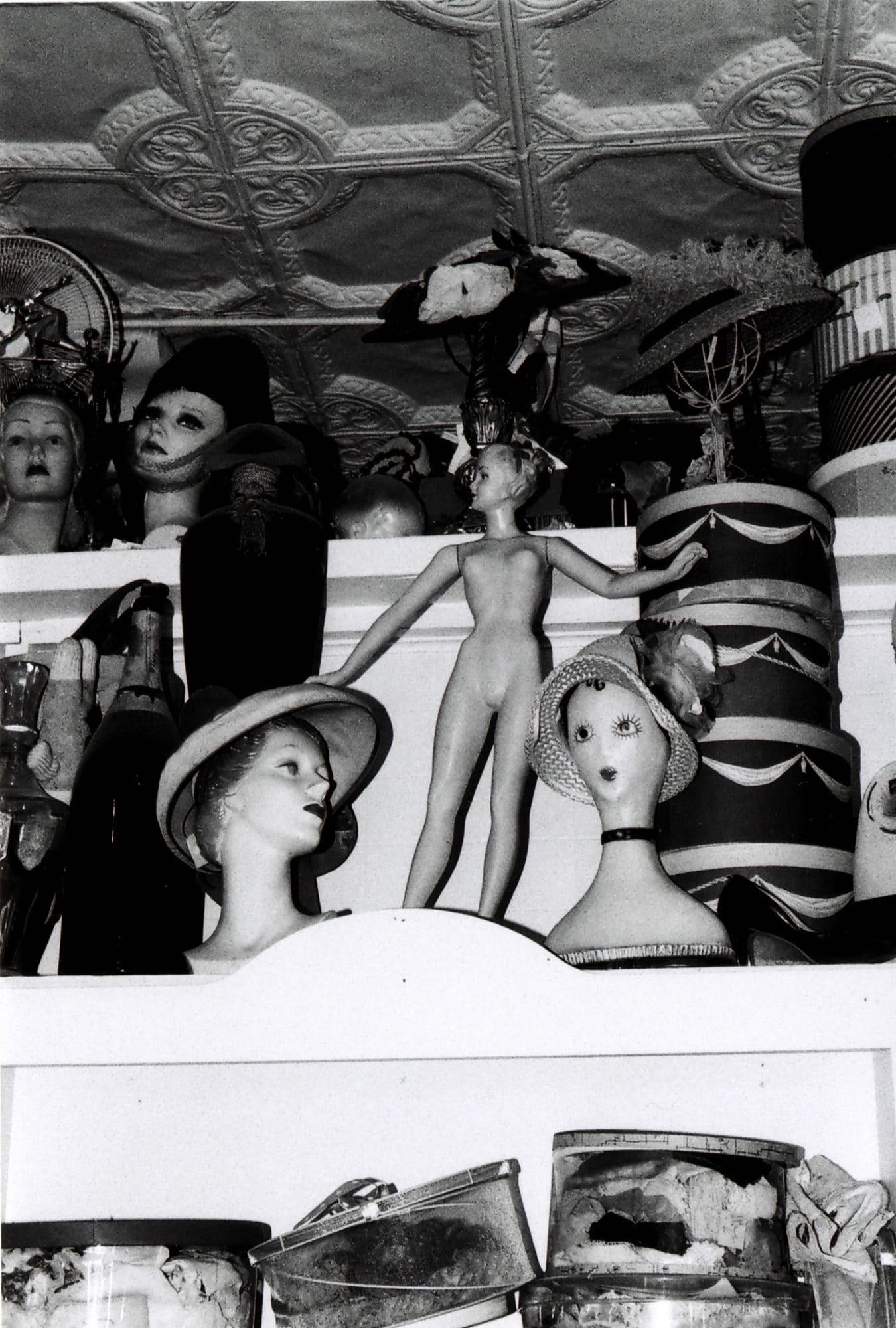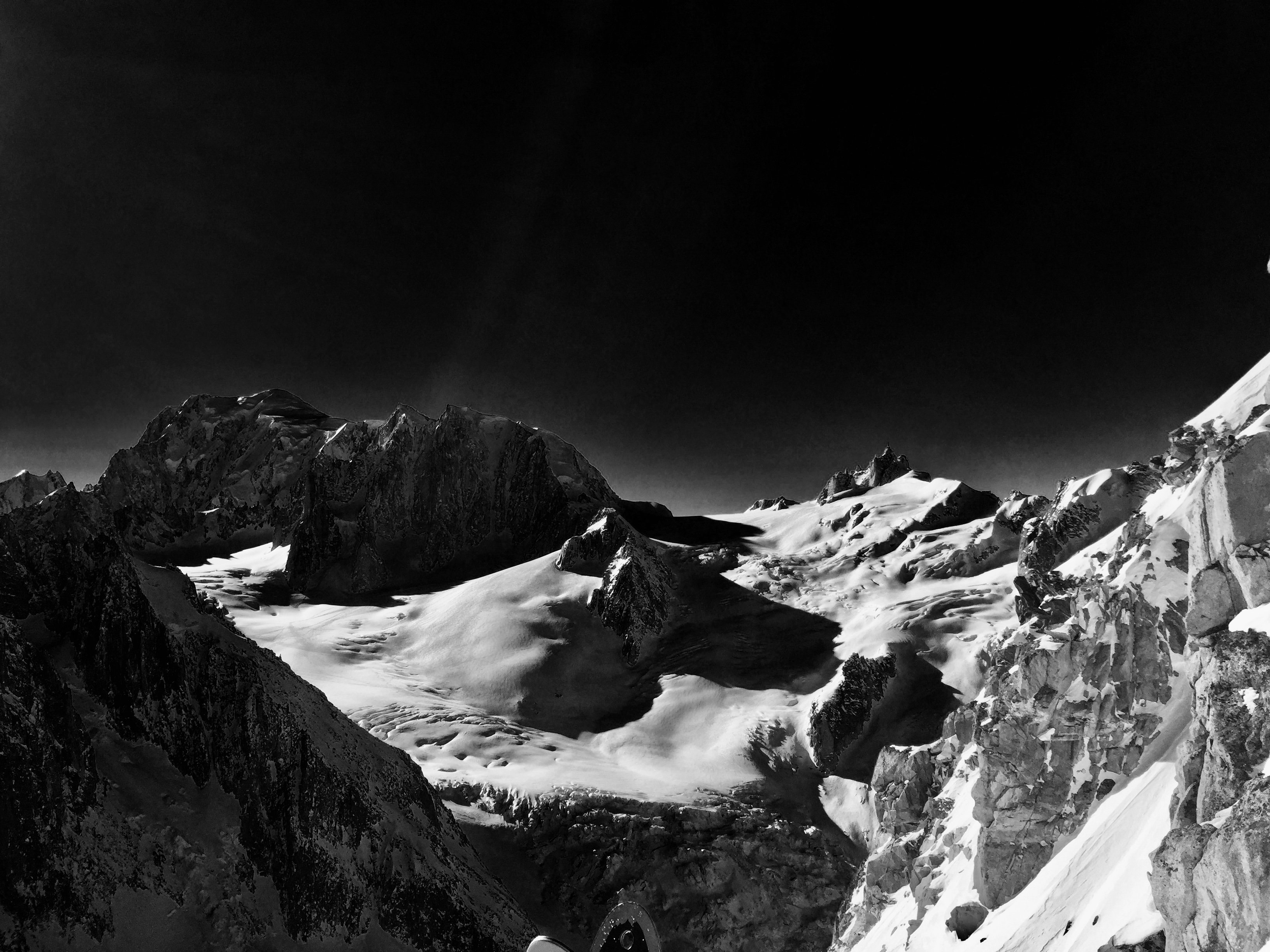Oona Skari went with her father, an artist, to trace her family history in the state of Montana in the United States. A trip of memories which led her to Butte, the richest hill of the early 20th century, now a sleepy city after the gradual closure of the copper and silver mines which made its wealth. In text and photos, she tells us of a meeting worthy of the silver screen, behind the scenes of this cinematographic city.
The town is deserted. The morning light bathes the facades which faded with time. The large boulevards, as far as the eye can see, are empty. Only a few cars turning at the corner of Broadway. The cafes and restaurants are closed. The sun strikes one side of the street, plunging the other into darkness. We go out of the Finlen Hotel, the Butte’s grand New-York style hotel. The hotel from which Robert Frank took his emblematic photo in 1955. A truly ignored theatre, this city offers scenery which is as Dantesque as it is grandiose. We stroll in the midst of these great avenues, transported by shadows and red brick buildings on the decline.
There is only one cafe open in what used to be one of the richest place of the country. The three steps which led us to the basement of the Metals Bank houses a large room which looks out at the sidewalk. This morning tavern is still very light. The placement of the windows is such that the rays of sunshine manage to illuminate the room, making the time more palpable. The room is split in two by a stage that serves as an upper room. Below large round tables and, above, long red imitation leather banquettes. The cafe is full. Conversations are superimposed into a calm and controlled background. Morning appetites are similar to those of chicks eagerly awaiting their meal. Plates overflowing with food appearing in a chain production. The odour of toast and bacon awakes our half asleep bodies. Filtered coffee flows and is responsible for awakening this drowsy mass of humanity. The contrast between the deserted street and the crowd is striking.
The wall that separates the two rooms is split in the middle leaving room for two men and a row of stools. One, dressed in a large checked flannel shirt and a cap is an inhabitant of Butte, the other, wears a very sober black jacket. This man who has the look of being a stranger to the town is none other than Wim Wenders. The encounter between cinema and the reality of a theatrical setting that is unknown. Fantom territories in some places, this city is full of cinematic references and enigmatic characters. Wenders sits alone on his stool.
Nobody seems to notice the presence of the great German film director. This chance encounter is strange. More than thirty years previously my father busy with his photographic work on Berlin, meet him in the streets of the capital as he filmed Wings of Desire. Thirty years later, in the midst of work on Butte, there they are crossing paths once again. Butte et Berlin, cities of cinematographic and photographic obsession for two men crossing paths through singular coincidences. Obsessions that were passed on to me because Butte is no accident. Parisian by origin, my grand-mother was born in Butte. Back in the empty streets, the second-hand shop where my father liked to hang out is closed. As for Wenders we will return later. The sun is pounding and turning the light into a white jet, blinding and uninteresting from a photographic point of view.
Then I start dreaming of big cars and Texan wanderings, dressed in a red sweater like the facades that surround me. The filtering voices, the snippets of conversations that we catch in passing set the scenario. Scenes are created on he wing. They link one after the other. The noise of a passing train, the moments of music and those in silence. A story between and a father and his child in the footsteps of a maternal past. Paris Texas. From Paris to Butte. Except in the reverse of Hunter, my route will take me back to France. My mother, I know her. Wenders’ personalities are unstable. Their sensitivity surrounds me and escorts me around the corners of the streets. The décor is alive. I am walking the floors of the cinema, while being outside of its codes. It is the reality for the inhabitants of Butte in which we are moving around. Protagonists or simply passers-by?
Sheltering from the sun, I prefer writing to images. The lobby of the Finlen is invaded by a sudden crowd who appeared out of nowhere. There were ten of them the previous evening. There are more than forty of them today. Bounding from one end to the other, strings and pens around their necks, notebooks in one hand and mobiles in the other. Far from being architects, as we had assumed, they are Wenders’ crew. As we spoke in French a woman passes by us and stops : « Bonjour ». The coincidences increase. This Belgian artist/writer who lives in Los Angeles, is accompanying her husband who is working on the film. Revealing the behind the scenes, she tells us that the second-hand shop and cafe with the smell of bacon and toast were especially opened for the team and its director. In the street, we pass all the protagonists from the cafe scene. Suddenly the breakfast scene takes a completely different dimension.
Having thought that we were alone in knowing Wim Wenders, we were suddenly actors in a play we didn’t even know existed. Scrolling through the mental images of the café, we realised that the “tourists” were in fact the cameramen, the audio technicians and the assistants. While in the early morning we thought we were writing the text of the play that was playing in front of us, we were actually the secondary actors of the breakfast scene directed by Wenders himself. Only the man sitting beside Wenders had no idea what he was playing. Amazed, in the midst of this crowd of strangers, he never ceased to turn around and fidget on his seat. His tension was palpable. He got up several times to check that his order wasn’t too delayed. Wenders, beside him, didn’t move. His attention fixed on his tablet. Suddenly, the unknown character bounded from his seat and went to sit on the big table behind Wenders. Alone with his coffee and his newspaper, he found himself sitting next to an enormous teddy bear. When we left the cafe, I turned and glanced at the communal room through the window one last time. In the foreground, the round tables, in the second and higher up, Wenders, and, in the background, the unknown character who was, anxiously and inquisitively, scrutinising me.







